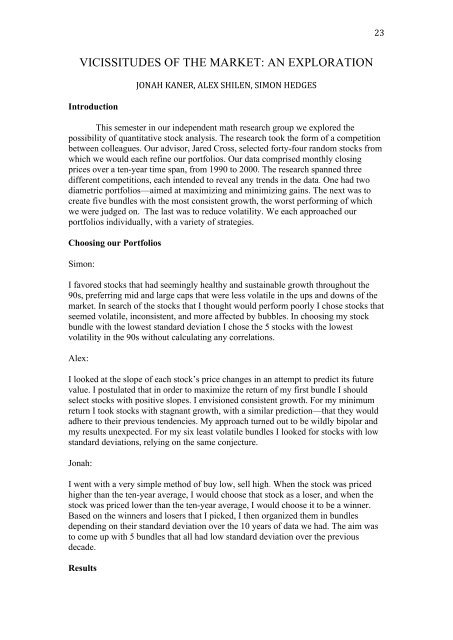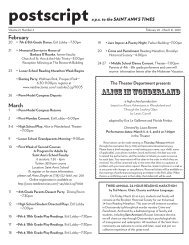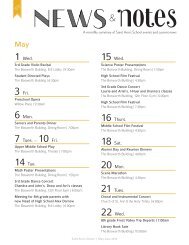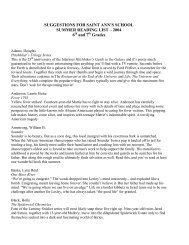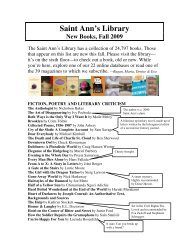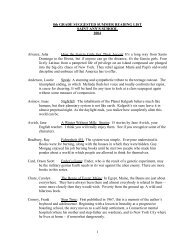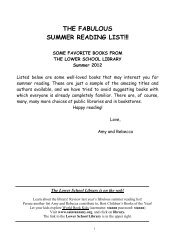Mathematical Journeys - Saint Ann's School
Mathematical Journeys - Saint Ann's School
Mathematical Journeys - Saint Ann's School
You also want an ePaper? Increase the reach of your titles
YUMPU automatically turns print PDFs into web optimized ePapers that Google loves.
23 <br />
<br />
VICISSITUDES OF THE MARKET: AN EXPLORATION<br />
<br />
Introduction<br />
JONAH KANER, ALEX SHILEN, SIMON HEDGES <br />
This semester in our independent math research group we explored the<br />
possibility of quantitative stock analysis. The research took the form of a competition<br />
between colleagues. Our advisor, Jared Cross, selected forty-four random stocks from<br />
which we would each refine our portfolios. Our data comprised monthly closing<br />
prices over a ten-year time span, from 1990 to 2000. The research spanned three<br />
different competitions, each intended to reveal any trends in the data. One had two<br />
diametric portfolios—aimed at maximizing and minimizing gains. The next was to<br />
create five bundles with the most consistent growth, the worst performing of which<br />
we were judged on. The last was to reduce volatility. We each approached our<br />
portfolios individually, with a variety of strategies.<br />
Choosing our Portfolios<br />
Simon:<br />
I favored stocks that had seemingly healthy and sustainable growth throughout the<br />
90s, preferring mid and large caps that were less volatile in the ups and downs of the<br />
market. In search of the stocks that I thought would perform poorly I chose stocks that<br />
seemed volatile, inconsistent, and more affected by bubbles. In choosing my stock<br />
bundle with the lowest standard deviation I chose the 5 stocks with the lowest<br />
volatility in the 90s without calculating any correlations.<br />
Alex:<br />
I looked at the slope of each stock’s price changes in an attempt to predict its future<br />
value. I postulated that in order to maximize the return of my first bundle I should<br />
select stocks with positive slopes. I envisioned consistent growth. For my minimum<br />
return I took stocks with stagnant growth, with a similar prediction—that they would<br />
adhere to their previous tendencies. My approach turned out to be wildly bipolar and<br />
my results unexpected. For my six least volatile bundles I looked for stocks with low<br />
standard deviations, relying on the same conjecture.<br />
Jonah:<br />
I went with a very simple method of buy low, sell high. When the stock was priced<br />
higher than the ten-year average, I would choose that stock as a loser, and when the<br />
stock was priced lower than the ten-year average, I would choose it to be a winner.<br />
Based on the winners and losers that I picked, I then organized them in bundles<br />
depending on their standard deviation over the 10 years of data we had. The aim was<br />
to come up with 5 bundles that all had low standard deviation over the previous<br />
decade.<br />
Results


